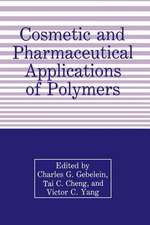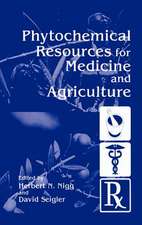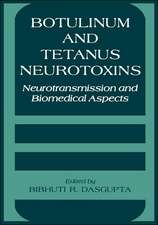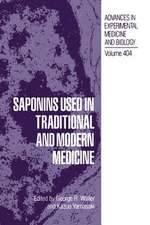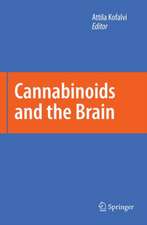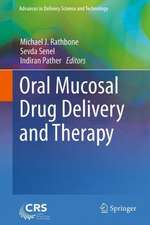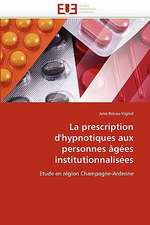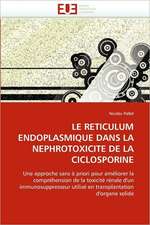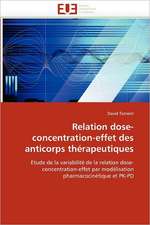Fundamentals and Applications of Controlled Release Drug Delivery: Advances in Delivery Science and Technology
Editat de Juergen Siepmann, Ronald A. Siegel, Michael J. Rathboneen Limba Engleză Paperback – 3 mar 2014
| Toate formatele și edițiile | Preț | Express |
|---|---|---|
| Paperback (1) | 1426.71 lei 6-8 săpt. | |
| Springer Us – 3 mar 2014 | 1426.71 lei 6-8 săpt. | |
| Hardback (1) | 1431.30 lei 6-8 săpt. | |
| Springer Us – 14 dec 2011 | 1431.30 lei 6-8 săpt. |
Preț: 1426.71 lei
Preț vechi: 1501.79 lei
-5% Nou
Puncte Express: 2140
Preț estimativ în valută:
273.04€ • 284.00$ • 225.41£
273.04€ • 284.00$ • 225.41£
Carte tipărită la comandă
Livrare economică 14-28 aprilie
Preluare comenzi: 021 569.72.76
Specificații
ISBN-13: 9781489986467
ISBN-10: 1489986464
Pagini: 608
Ilustrații: XIV, 594 p.
Dimensiuni: 155 x 235 x 40 mm
Greutate: 0.84 kg
Ediția:2012
Editura: Springer Us
Colecția Springer
Seria Advances in Delivery Science and Technology
Locul publicării:New York, NY, United States
ISBN-10: 1489986464
Pagini: 608
Ilustrații: XIV, 594 p.
Dimensiuni: 155 x 235 x 40 mm
Greutate: 0.84 kg
Ediția:2012
Editura: Springer Us
Colecția Springer
Seria Advances in Delivery Science and Technology
Locul publicării:New York, NY, United States
Public țintă
ResearchCuprins
The Need for Drugs and Drug Delivery Systems.- Overview of Controlled Release Mechanisms.- Hydrophobic Polymers of Pharmaceutical Significance.- Hydrogels.- Biodegradable Polymers in Drug Delivery Systems.- Diffusion Controlled Drug Delivery Systems.- Swelling Controlled Drug Delivery Systems.- Degradable Polymeric Carriers for Parenteral Controlled Drug Delivery Systems.- Porous Systems.- Targeted Delivery Using Biodegradable polymeric Nanoparticles.- Liposomes in Drug Delivery.- Receptor Mediated Delivery Systems for Cancer Therapeutics.- Biological Rhythms, Drug Delivery, and Chronotherapeutics.- Site Specific Controlled Release for Cardiovascular Disease – Translational Direction.- Drug Delivery Systems to Fight Cancer.- Applications of Vaccine Delivery in Infectious Diseases.- Tissue Engineering in Drug Delivery.- The Shaping of Controlled Release Drug Product Development by Emerging Trends in the Commercial, Regulatory and Political Macro-Environment
Notă biografică
Professor Juergen Siepmann is Professor of Pharmaceutics at the College of Pharmacy, Université Lille Nord de France, Lille, France. He studied pharmacy and received his doctoral degree from the Freie Universitaet Berlin, Berlin, Germany, in 1999. His research focuses on the elucidation of the underlying mass transport phenomena in controlled drug delivery systems. Prof. Siepmann is reviews editor of the International Journal of Pharmaceutics and president of APGI (French Association of Pharmaceutical Technology). Since 2010 he is heading the INSERM (French National Institute of Health and Medical Research) research group “Controlled Drug Delivery Systems and Biomaterials”.
Ronald A. Siegel, Sc.D., is Professor of Pharmaceutics and Biomedical Engineering at the University of Minnesota. He received his doctoral degree from MIT under the direction of Prof. Robert Langer in 1984, and taught at the University of California, San Francisco until 1998, when he moved to Minnesota. Professor Siegel is Fellow of the Controlled Release Society (CRS), the American Association of Pharmaceutical Scientists, and the American Institute of Medical and Biological Engineering. He was president of CRS from 1997-1998. His present research interests include hydrogels, block polymers, microfabricated sensors and drug delivery systems, and mathematical modeling of transport.
Michael J. Rathbone is Associate Professor of Pharmaceutics at the School of Pharmacy, Griffith University, Australia. Dr. Rathbone’s research interests are in the modified delivery of bioactives to the mouth, polymeric delivery systems and long acting veterinary drug delivery systems. He is a Fellow of the Controlled Release Society (CRS) and received the CRS Distinguished Service Award in 2006. He has edited or co-edited many books in the fields of modified release drug delivery, oral mucosal drug delivery andveterinary drug delivery.
Ronald A. Siegel, Sc.D., is Professor of Pharmaceutics and Biomedical Engineering at the University of Minnesota. He received his doctoral degree from MIT under the direction of Prof. Robert Langer in 1984, and taught at the University of California, San Francisco until 1998, when he moved to Minnesota. Professor Siegel is Fellow of the Controlled Release Society (CRS), the American Association of Pharmaceutical Scientists, and the American Institute of Medical and Biological Engineering. He was president of CRS from 1997-1998. His present research interests include hydrogels, block polymers, microfabricated sensors and drug delivery systems, and mathematical modeling of transport.
Michael J. Rathbone is Associate Professor of Pharmaceutics at the School of Pharmacy, Griffith University, Australia. Dr. Rathbone’s research interests are in the modified delivery of bioactives to the mouth, polymeric delivery systems and long acting veterinary drug delivery systems. He is a Fellow of the Controlled Release Society (CRS) and received the CRS Distinguished Service Award in 2006. He has edited or co-edited many books in the fields of modified release drug delivery, oral mucosal drug delivery andveterinary drug delivery.
Textul de pe ultima copertă
This authoritative book covers the fundamentals relating to the science and technology of drug delivery. The book is written at a level that is understandable to those entering the field and who are not familiar with its common phrases or complex terms. It is a book that provides a simple encapsulation of concepts and expands on them using a building block approach to each subject, starting at a basic level and building to extend the readers knowledge and application of the subject. In each chapter the basic concept is explained as simply and clearly as possible without a great deal of detail, then in subsequent sections additional material is introduced in order to build up the reader’s understanding and comprehension of the subject matter.
The book comprises several Parts. The first part covers the fundamentals of drug delivery, the second covers delivery materials, the third deals with delivery systems (both temporal and spatial) and the fourth introduces the reader to some clinical applications of drug delivery. The book ends with a future outlook chapter in which prospects for the field are envisioned.
This book will be indispensible to scientists interested in the science and technology of drug delivery and be essential for those developing delivery systems designed to improve the clinical performance of a drug.
Professor Juergen Siepmann is Professor of Pharmaceutics at the College of Pharmacy, Université Lille Nord de France, Lille, France. He studied pharmacy and received his doctoral degree from the Freie Universitaet Berlin, Berlin, Germany, in 1999. His research focuses on the elucidation of the underlying mass transport phenomena in controlled drug delivery systems. Prof. Siepmann is reviews editor of the International Journal of Pharmaceutics and president of APGI (French Association of Pharmaceutical Technology). Since 2010 he is heading the INSERM (French National Institute ofHealth and Medical Research) research group “Controlled Drug Delivery Systems and Biomaterials”.
Ronald A. Siegel, Sc.D., is Professor of Pharmaceutics and Biomedical Engineering at the University of Minnesota. He received his doctoral degree from MIT under the direction of Prof. Robert Langer in 1984, and taught at the University of California, San Francisco until 1998, when he moved to Minnesota. Professor Siegel is Fellow of the Controlled Release Society (CRS), the American Association of Pharmaceutical Scientists, and the American Institute of Medical and Biological Engineering. He was president of CRS from 1997-1998. His present research interests include hydrogels, block polymers, microfabricated sensors and drug delivery systems, and mathematical modeling of transport.
Michael J. Rathbone is Associate Professor of Pharmaceutics at the School of Pharmacy, Griffith University, Australia. Dr. Rathbone’s research interests are in the modified delivery of bioactives to the mouth, polymeric delivery systems and long acting veterinary drug delivery systems. He is a Fellow of the Controlled Release Society (CRS) and received the CRS Distinguished Service Award in 2006. He has edited or co-edited many books in the fields of modified release drug delivery, oral mucosal drug delivery and veterinary drug delivery.
The book comprises several Parts. The first part covers the fundamentals of drug delivery, the second covers delivery materials, the third deals with delivery systems (both temporal and spatial) and the fourth introduces the reader to some clinical applications of drug delivery. The book ends with a future outlook chapter in which prospects for the field are envisioned.
This book will be indispensible to scientists interested in the science and technology of drug delivery and be essential for those developing delivery systems designed to improve the clinical performance of a drug.
Professor Juergen Siepmann is Professor of Pharmaceutics at the College of Pharmacy, Université Lille Nord de France, Lille, France. He studied pharmacy and received his doctoral degree from the Freie Universitaet Berlin, Berlin, Germany, in 1999. His research focuses on the elucidation of the underlying mass transport phenomena in controlled drug delivery systems. Prof. Siepmann is reviews editor of the International Journal of Pharmaceutics and president of APGI (French Association of Pharmaceutical Technology). Since 2010 he is heading the INSERM (French National Institute ofHealth and Medical Research) research group “Controlled Drug Delivery Systems and Biomaterials”.
Ronald A. Siegel, Sc.D., is Professor of Pharmaceutics and Biomedical Engineering at the University of Minnesota. He received his doctoral degree from MIT under the direction of Prof. Robert Langer in 1984, and taught at the University of California, San Francisco until 1998, when he moved to Minnesota. Professor Siegel is Fellow of the Controlled Release Society (CRS), the American Association of Pharmaceutical Scientists, and the American Institute of Medical and Biological Engineering. He was president of CRS from 1997-1998. His present research interests include hydrogels, block polymers, microfabricated sensors and drug delivery systems, and mathematical modeling of transport.
Michael J. Rathbone is Associate Professor of Pharmaceutics at the School of Pharmacy, Griffith University, Australia. Dr. Rathbone’s research interests are in the modified delivery of bioactives to the mouth, polymeric delivery systems and long acting veterinary drug delivery systems. He is a Fellow of the Controlled Release Society (CRS) and received the CRS Distinguished Service Award in 2006. He has edited or co-edited many books in the fields of modified release drug delivery, oral mucosal drug delivery and veterinary drug delivery.
Caracteristici
Text easy to understand Book is generously supplemented with diagrams Covers among others mechanisms and modeling of drug delivery, overview of applied therapeutics, and concepts of temporal, spatial and chronotherapeutic approaches to drug delivery Includes supplementary material: sn.pub/extras
















